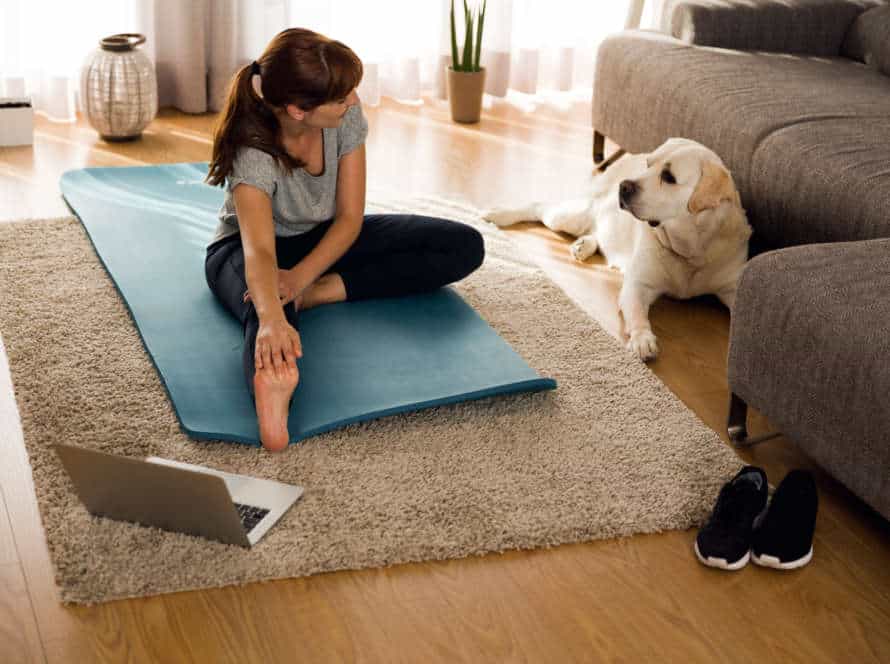The Physical and Mental Benefits of Exercise for Dogs
Exercise is a must for dogs! It provides physical and mental benefits. Physically, it helps keep healthy body weight & muscle, increases bone density & cardiovascular health, and boosts their immune system & digestion. Mentally, it gives an outlet for their energy, reducing destructive behavior & improving their disposition. Plus, it reduces stress & anxiety, promotes better sleep, and sharpens their cognitive function.
Pro Tip: Give your pup a variety of activities like walking, running, fetch, and swimming. Start slow and increase intensity & duration gradually to avoid fatigue & injury.
Physical Benefits of Exercise for Dogs
Everyone is aware that exercise is essential for humans to stay healthy. But did you know it also has health advantages for our four-legged companions? Exercise helps keep dogs physically fit, aids in weight loss, and boosts their overall wellbeing. Let’s delve into the physical benefits of exercise for dogs more deeply.
Maintains a healthy weight and body condition
Exercising is key for doggies to stay fit and strong! It helps burn calories, build muscles and improve heart health. It can also avoid obesity, joint issues and other health issues. Here are the physical benefits of exercise for doggies:
- Weight management – Exercise is the top way of managing a pup’s weight, especially if they are prone to gaining weight.
- Improved Cardiovascular Health – Exercise keeps a dog’s heart and lungs healthy, lowers the chance of diseases like heart and respiratory issues.
- Stronger muscles and bones – Exercise aids in maintaining muscle mass, strength and flexibility, reducing joint pains and preventing arthritic conditions.
- Increased energy levels – Consistent exercising boosts a dog’s energy, making them more alert and active.
- Prevent destructive behavior – Mental stimulation from exercise stops destructive behavior, such as chewing on furniture or digging.
Ultimately, regular exercise is a must for a pup’s physical health. It is important to make an exercise routine that includes different forms of physical activity to keep your doggie healthy, happy and active. Remember to take your pup’s physical ability into account and talk to a vet before starting a new exercise regimen.
Decreases the risk of chronic diseases
Exercise is essential for our four-legged friends. It lessens their chance of getting obesity, heart disease or diabetes. Benefits of daily exercising include:
- Decreased obesity – Exercise burns calories and sustains a healthy weight.
- Enhanced cardiovascular health – Exercising increases heart rate and better blood circulation.
- Improved mobility and joint health – Running, jumping and walking help keep bones and joints in good condition.
- Strengthened immunity – Regular exercise enhances the immune system, reducing the risk of chronic diseases.
Exercise also benefits dogs mentally, like decreasing stress and anxiety, improving mood and stimulating their brains. Give your pooch the gift of health by including exercise in their everyday routine.
Improves cardiovascular health
Exercise for dogs is great for their cardiovascular health! It helps strengthen the heart muscles and reduce the risk of heart attacks, strokes and kidney failure. Plus, it regulates blood pressure, lowers resting heart rate, and increases oxygen delivery. Not to mention, regular exercise also strengthens the immune system, aids in weight control, improves bone density, keeps the coat healthy and reduces anxiety. All in all, providing your pup with regular exercise can increase their life span and keep them happy and healthy.
Mental Benefits of Exercise for Dogs
Exercise is important for any animal’s mental health, including dogs! Going for walks with your pup helps reduce stress, keep them alert and active, and even gives them mental stimulation.
Let’s explore the mental health benefits of exercise for dogs more closely.
Reduces anxiety and depression
Exercise is great for dogs! It can reduce anxiety and depression. Endorphins are released when they get regular physical activity. This helps them feel more relaxed and get better sleep. It also helps keep their weight healthy.
In addition to exercise, owners should also provide proper nutrition, socialization, and mental stimulation. This improves their cognitive function and reduces the risk of age-related cognitive decline.
Pro tip: Regular exercise is key!
Enhances mood and improves behavior
Exercise has many mental benefits for dogs. It boosts their mood, and also improves their behavior. Dogs naturally release endorphins – sometimes called “feel-good” chemicals – when they exercise regularly. This helps them feel calm, happy and healthy. Exercise also burns off extra energy, and helps keep their minds active, preventing bad behaviors like chewing, barking or digging.
To get the best results, include a range of activities in their exercise routine, such as running, walking, fetch, and agility training. Make sure to adjust intensity and duration based on age, breed and health needs.
Provides mental stimulation and reduces boredom
Exercise is a must for dogs’ overall health and well-being. It stimulates their minds and helps them avoid boredom. Plus, regular exercise keeps them physically fit.
It also offers mental benefits like:
- Reducing stress and anxiety. Exercise releases endorphins, which make dogs feel relaxed and happy.
- Enhancing cognitive function. It challenges their mental abilities and helps with memory, learning, and problem-solving.
- Curbing destructive behavior. Exercise can provide an outlet for their energy, which stops them from being destructive.
So, make sure to give your dog both physical and mental exercise. Keep them happy and healthy!
Types of Exercises for Dogs
Exercise is essential for doggy health. It helps to keep them fit and provides mental benefits too!
There are plenty of activities to do with your pup to ensure they are getting the most out of being active. Here are some examples:
- walking
- fetch
- swimming
- agility courses
- and more!
Aerobic exercises, such as running and swimming
Aerobic exercises, such as running and swimming, are great for dogs. They give physical and mental benefits. Running strengthens bones, muscles and joints. Swimming is gentle on the joints and is good for the heart. Exercise can help prevent obesity, reduce the risk of heart disease and arthritis, and improve a dog’s mental health.
Other exercises for dogs include walking, hiking and playing fetch. Choose an exercise routine suitable for your dog’s size, age, and breed. Exercise should be done regularly and gradually increased in intensity to avoid injury. Make sure your furry friend stays hydrated and watch for signs of exhaustion or overheating. Pro tip: Consult with your vet to design a safe and effective exercise routine.
Anaerobic exercises, such as agility training
Agility training is a popular anaerobic exercise for dogs that offers both physical and mental benefits. With obstacles such as jumps, tunnels and weave poles, dogs run and navigate the course as their owners provide cues. Here are the benefits of agility training for dogs:
Physical Benefits:
- Cardiovascular health
- Strength and endurance
- Coordination and balance
- Joint flexibility
- Weight management
Mental Benefits:
- Confidence and trust between owner and dog
- Focus and alertness
- Reduced boredom and destructive behavior
- Strengthened bond between dog and owner
- Problem-solving skills
Agility training is great to keep your pup fit. Before beginning, ensure your pup is healthy enough and start with simple obstacles to avoid injury.
Brain games and enrichment activities
Brain games and enrichment activities can be a fun, stimulating way to give your pup mental exercise. Here are some ideas:
- Hide and seek – Hide treats or toys around the house or in your backyard. Encourage your dog to find them.
- Puzzle toys – Toys which require your dog to solve a challenge for a treat or prize.
- Agility training – Set up an obstacle course in your garden, or take your pup to an agility class.
- Obedience training – Regularly train to strengthen the bond and to improve behaviour.
- Walking – Good for physical and mental stimulation. Dogs love to explore and sniff around.
- Swimming – Low-impact exercise, good for dogs with joint problems or injuries.
These exercises provide physical and mental benefits – better cardio, more socialisation and improved cognitive development.
Pro Tip: Choose exercises that fit your dog’s personality, breed, age and health condition.
Exercise Guidelines for Dogs
Exercise is great for your pup’s health and well-being! It can benefit your dog both physically and mentally. When exercising your dog, there are some tips to remember. Let’s see what the best practices are for keeping your canine fit and happy.
Frequency and duration of exercise
Exercise frequency and duration for doggos are vital to make sure your pup gets the physical and mental benefits of exercise. The American Kennel Club has advised the following:
- Small breeds: 30 minutes a day.
- Medium breeds: 45 minutes a day.
- Large breeds: 1 hour a day.
Also, increase duration and intensity gradually, to avoid overworking and injuries.
Check with your vet for age, health condition, and breed-specific exercise requirements.
Pro Tip: Regular exercise reduces stress, anxiety, and bad behavior in dogs. So make sure your pup gets the right amount of exercise every day.
Choosing the right exercise routine for your dog’s age and breed
Humans and dogs have unique exercise needs. It depends on age and breed. The right routine can improve physical and mental health, as well as quality of life. Here are some guidelines:
Puppies: Don’t over-exercise them. Short walks, play, and training exercises are best.
Adult Dogs: Need regular exercise to stay fit. Long walks/runs, ball throwing, and swimming are great.
Senior Dogs: Low-impact exercises to avoid joint strain. Short walks and gentle swims are ideal.
Breeds: Exercise needs vary. For example, Beagles need more vigorous exercise than Pugs.
See your vet for specific recommendations. Regular exercise helps physical and mental health, and even lifespan.
Safety precautions during exercise
Exercising your furry friend is essential to keep them feeling happy and healthy. But, there are important safety precautions to take. Here are a few to consider:
- Ensure your pup is physically fit and doesn’t have any underlying health conditions that could be made worse by exercise.
- Warm up before starting, raising the heart rate slowly and stretching muscles.
- Provide water before, during, and after exercising to keep them hydrated.
- Avoid exercising in extreme weather conditions, like hot and humid or cold.
- Use the right equipment for the type and intensity of exercise you have planned, like a collar or harness.
- Begin slowly and gradually increase the duration and intensity of exercise to avoid injury.
Be mindful of your pup’s body language and make sure they are comfortable throughout the exercise!
Conclusion: The Importance of Regular Exercise for Dogs
In short, it’s essential to give dogs regular exercise. It not only helps with physical health, but also emotional stability. Physically, it:
- Helps keep a healthy weight;
- Makes muscles and bones stronger;
- Improves cardiovascular health;
- Boosts the immune system.
It also has mental benefits, like:
- Reducing stress and anxiety;
- Enhancing happiness;
- Limiting destructive behavior;
- Encouraging socialization.
As an owner, you should provide your pup with physical activities every day. Whether it’s a walk, fetch, or a hike, they will thank you for helping them stay happy and healthy.
Frequently Asked Questions
Q: What are the physical benefits of exercise for dogs?
A: Exercise can help dogs maintain a healthy weight, improve their cardiovascular health, build muscle mass, and boost their energy levels.
Q: What are the mental benefits of exercise for dogs?
A: Exercise can help reduce anxiety and stress, improve mood, increase mental stimulation and help prevent behavioral issues such as barking, chewing or digging.
Q: How much exercise does my dog need?
A: The amount of exercise your dog needs varies depending on its breed, size, age, and overall health. However, as a general rule, dogs should get at least 30 minutes to 2 hours of exercise per day, depending on their level of activity and exercise needs.
Q: What kind of activities count as exercise for dogs?
A: Activities that can count as exercise for dogs include walking, running, playing fetch, swimming, and hiking.
Q: Can exercise help with my dog’s behavior?
A: Yes, exercise can help with a dog’s behavior by reducing anxiety and stress levels and providing mental stimulation, which can help prevent destructive behaviors like chewing, barking, or digging.
Q: How can I make sure my dog is exercising safely?
A: To make sure your dog is exercising safely, you should consult with your veterinarian on what activities are appropriate for their age, breed, and health condition, and you should always supervise your dog during exercise activities.







